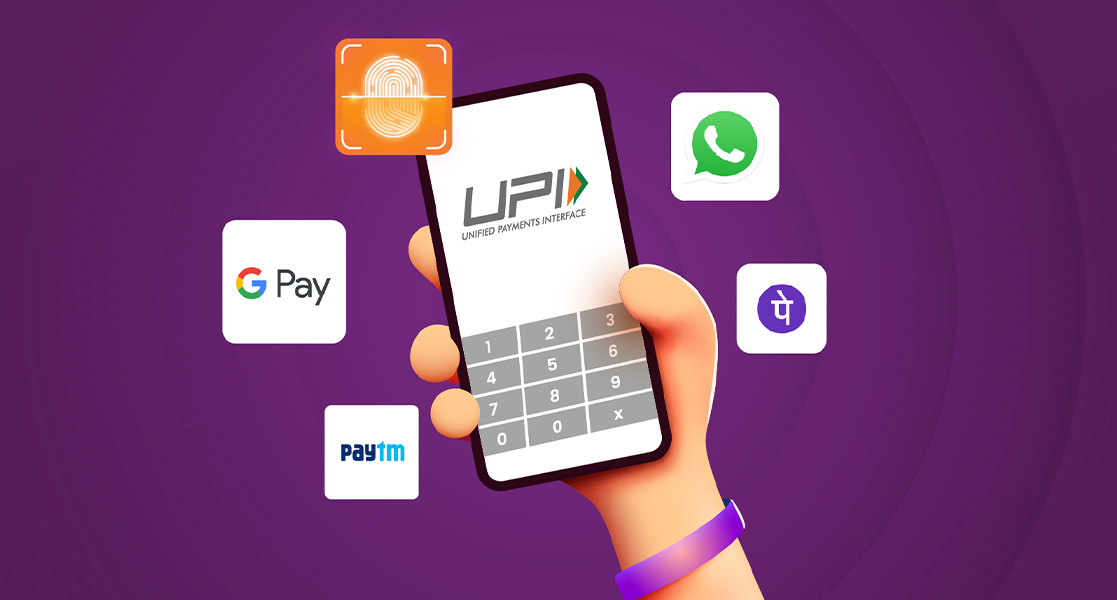The FinTech space is abuzz with the Reserve Bank of India’s June announcement to extend Unified Payments Interface to include credit cards. In its Payments Vision 2025 , the RBI has announced to begin this project with RuPay, India’s domestic card network.
That very month, the National Payment Corporation of India (NPCI), the brain behind UPI, recorded 2.8 billion transactions worth INR 4.57 lakh crore. Against this, June 2022 witnessed credit card transactions worth 1.1 crore. Yet, industry experts are curious to know what change this spells for the card payments industry.
Is UPI putting up stiff competition against credit and debit cards? With the average bill ticket size via credit-enabled UPI predicted to be at INR 3,000, how will the RBI’s decision impact stakeholders at large?
With increasing preference for UPI, merchants and enterprises are poised to entertain and accommodate their customer’s payment preferences. At Innoviti, our relationships, products and decisions are all informed by data. We’ve cast a bird’s eye view on our transaction data across portfolios to deliver key insights that will help make informed business decisions.
UPI 2.0
Before we can dig into the meat of our data, let’s understand the gravity of the RBI’s decision.
Unlike its 2018 stint, the RBI seems to be serious this time around, in line with its commitment to Digital India. According to the regulator, in addition to furthering financial inclusion, this “arrangement is expected to provide more avenues and convenience to customers in making payments through the UPI platform.”
However, like last time, doubts regarding the success of credit integration to UPI are bothering payment solution providers, merchants, and banks—all surrounding MDR or merchant discount rates.
Pain Point of UPI:
*MDR is a fee built into the online payment chain that the merchant bears to compensate the parties involved in a digital transaction: bank, payment gateway, processor, etc.
The following infographic from RBI’s document succinctly explains the internal costs involved in processing the average UPI transaction:
As someone who keeps a strict watch on expenditure, one can immediately glean how and why a stakeholder of the NPCI would feel compelled to push for credit cards to be included in the UPI framework: losses. As internal sources have disclosed, the regulator’s decision comes after much lobbying by the NPCI.
Solution? With the integration of credit with UPI, NPCI will stave off losses that have been endemic to the payment chain. Where does that leave merchants and enterprises?
Innoviti’s Findings:
In light of this, our data points provide insights to put your best foot forward. “Why?”, you might ask. As a leading payment solutions provider to offline merchants, we are best positioned to understand consumer behaviour at our merchant stores making a plausible prediction regarding the health of card payments in the Indian payment space.
Key Observations:
We have arrived at the following key observations after studying our transaction data of 2020, 2021 and the first quarter of 2022:
- UPI usage has dramatically increased from 0.3% – 0.8%
- UPI witnessed key growth in the Foods and Beverages segment 0.7% – 29.5%
- Credit card usage has dropped by 7%
- Debit Card usage has stayed relatively stable
Where are we headed?
Like the RBI, we too are committed to India’s march towards digitization and welcome initiatives that hasten the penetration of the digital payment infrastructure. However, it is too soon to arrive at a convincing prediction on the fate of card payments. From our transaction data, it is quite clear that there is a sustained preference for UPI. There is a value added benefit for customers as UPI is quick, fast and relatively safe. Merchants embrace UPI to avoid MDR, and yet, to assume that all their business decisions are influenced by that consideration alone would be too uninformed and simplistic of a conclusion: as our data demonstrates.
In various segments, we noted a considerable drop in the use of credit card usage, save for apparel and jewellery. Unsurprisingly, however, Innoviti terminals have recorded close competition between UPI and card usage in the food and grocery segment.
Then is it to call for a rapid, but smooth transition, to UPI? No. From the data we have presented, it is quite clear that Indians have diverse spending preferences that vary from segment to segment. To credit-proof one’s business, it would be inadvisable for merchants immediately to favour UPI over credit and debit payments. For instance, it would be detrimental for an apparel retailer or a local jewellery store to give undue importance to UPI. It is, as they say, too soon to tell!.
Rather, now more than ever, merchants will find great use in taking the help of payment solutions, offered by firms like Innoviti, that accept various payment methods and ensure smooth business operations.
If customer’s payment behaviour is anything to go by, customers are going to favour ease of experience and wealth of payment options over mere convenience. Hence, while UPI offers undoubtable convenience, as merchants, your considerations need to accommodate and align with their expectations rather than making an overnight, and hasty, transition in anticipation of credit-enabled UPI.
Many expect credit’s integration to cause a surge in UPI uptake and while reshaping the uptake of credit in India. However, could it also be argued that the burden of MDR of 2 – 3% (present MDR for credit cards) could compel merchants to adopt PoS solutions optimised to accept all modes of payments? With this, the merchant enjoys the benefit of non MDR UPI payments but also the transparency of controlled merchant rates on credit card processing.
Our study, hence, offers valuable insight into present and potential payment trends we can expect at offline PoS terminals with the fast onset of UPI 2.0.
